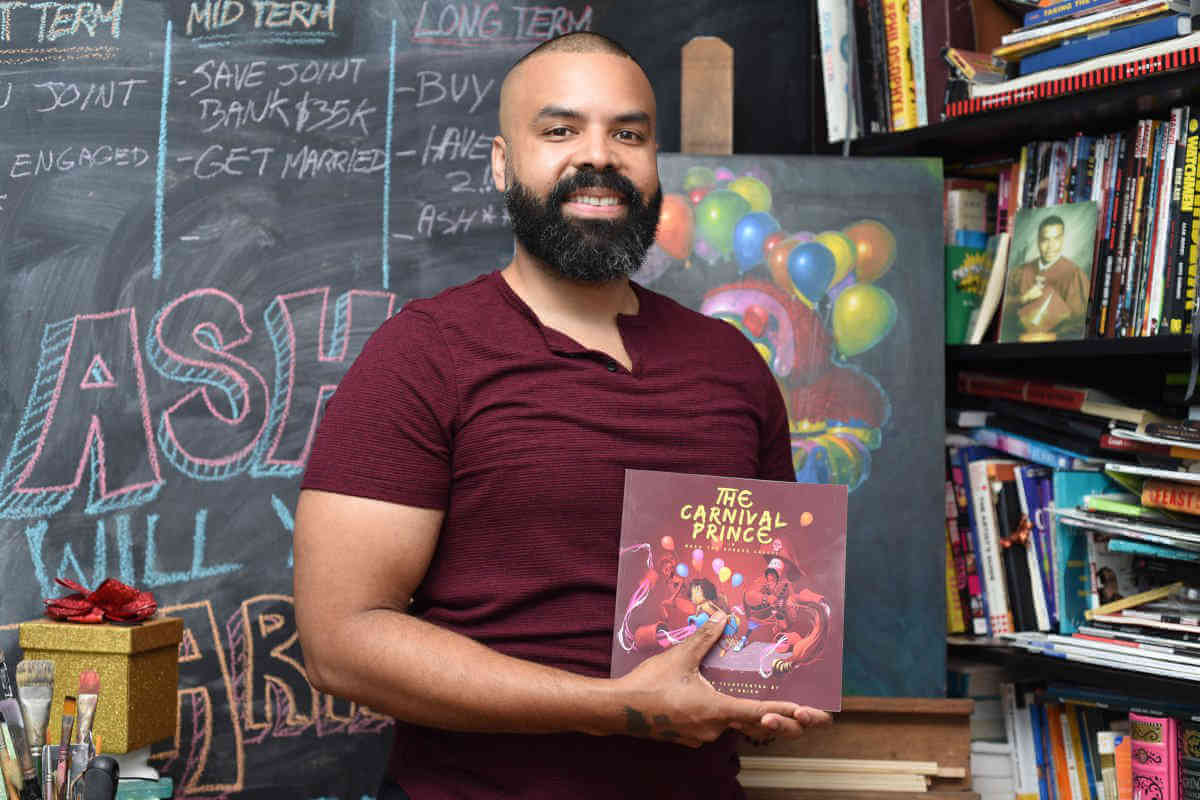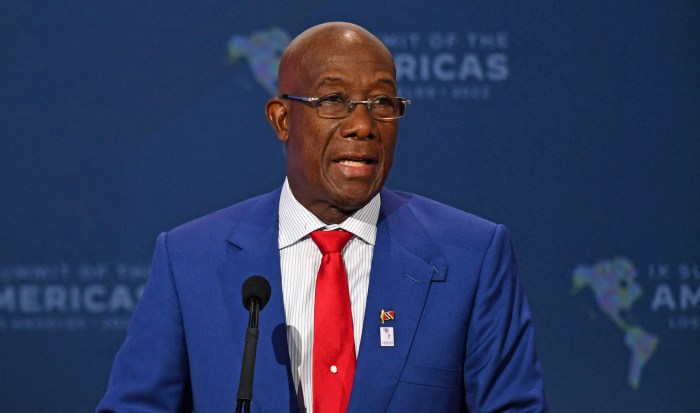A Queens-based illustrator and author celebrates Caribbean folklore and Trinidadian carnival in his children’s book, “The Carnival Prince.” In the book, creator Daniel O’Brien highlights the mythical entities and traditional stories he heard growing up, all through the perspective of a young protagonist on an adventure. He also to wanted to revisit all the tales he knew, and repurpose them into a digestible content.
“The book is a combination of West Indian folklore and Trinidadian traditions, and I brought those two together in this book because I wanted to bring them together and tell it through the eyes of new characters,” said O’Brien.
Born and raised in Trinidad and Tobago until eight years old, O’Brien said in his trips back to his native country he often participated in carnival festivities. Coming from a family of carnival enthusiasts he was very immersed in the culture. This exposure led to the inspiration for many of his illustrations, and eventually writing the book.
“I’ve always been a fan of folklore and traditional stories — it runs in my blood,” he said. “I come from a family that designs carnival costumes and whenever I go back, I’m always attracted to the folklore, and I knew one day I would create a book of all the decades of illustrations I drew of Caribbean culture.”
With illustrations on hand, O’Brien said he wanted to write a story surrounding the imagery he created.
“I’m an illustrator first and my work is geared more towards fantasy and Sci-fi with a Caribbean twist,” he added. “So when I decided I wanted to write a book, I put together a huge collage of my illustrations and realized I had my story right there.”
The main character in the 66-page book is of a young boy who travels from island to island, coming across notable characters such as Mama D’Lo and Papa Boi, and discovers fascinating people and mythical creatures on his journey to discovering carnival.
He also wrote and designed the book to be read in sections, and to be an engaging reading session for its target audience.
“It’s a chapter book meant for young readers, and my dream was for it be read at bedtime and meant to be read out loud,” said O’Brien. “Each chapter brings the characters together and in a particular arc, and it introduces a new part of the story.”
A standout aspect in the book is a two-page glossary at the end of it, detailing all of the meanings of English-creole words used throughout the book. The intentional use of Trinidadian dialect and lingo is an effort to keep the story true to the culture, according to O’Brien.
O’Brien said his main goal with the book was to inspire interest in oral histories native to the Caribbean and tell a story in which young kids could relate too.
“This is a children’s book, but it’s also for anyone who has an inkling or curiosity towards the Caribbean or Trinidad and Tobago, or anyone interested in folklore and seeing through a different point of view,” he said.
He said many readings on folklore were often told by people who were not tied to the culture, and do not grasp the full comprehension of it. And he wanted to contribute in changing the narrative and highlight the youth who may also discover folklore.
“I’m big on being my own voice and one of the biggest reasons I put together this book is because I was always seeing the folklore being told by people who don’t understand it well enough — it wasn’t genuine,” said O’Brien. “I’ve lived in Trinidad and I’m buried in the culture, so I know I can tell a worthwhile story, especially one for young black and brown children in publishing because I feel like the representation is very needed.”






















